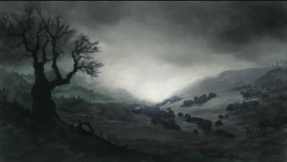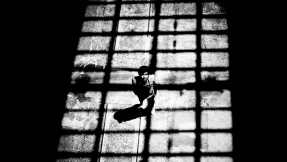To the Lighthouse: Isolation, Mourning, and the Need for Sympathy
Two years after publishing Mrs. Dalloway in 1925, Virginia Woolf wrote To the Lighthouse—yet another memorable work to become included among Woolf’s impressive repertoire of short stories, novels, and critiques.
However, unlike her prior war novels—in which she directly comments on societal norms and beliefs with a detached air—To the Lighthouse has a far more personal quality to it.
While Woolf’s commentary on society is still present in the way she portrays male-female relationships and the beliefs that perpetuate its conditions, there is a greater emotional emphasis in terms of the impact war has when an individual loses a loved one.
This article is one of a series of three discussing Woolf’s novels, Jacob’s Room, Mrs. Dalloway, and To the Lighthouse. The form of my argument is comprised, as with my other articles, of close analyses of specific passages that reflect on Woolf’s broader messages.
Structure and Story
In terms of the setting of To the Lighthouse, one can think of it as a combination of Jacob’s Room and Mrs. Dalloway in the sense that its three sections span from before England’s involvement in World War I, to the time after the war ends. The three sections of the novel are ordered in the following manner: “The Window,” “Time Passes,” and “The Lighthouse”—each written in the form of stream of consciousness.

The first section details the activities and thoughts of each character over the course of a day—from the moment Mr. Ramsay denies the possibility of going to the lighthouse, to the moment where Mrs. Ramsay convinces Mr. Ramsay that she loves him without her having to directly state it. In the second section, various references are made to World War I as ongoing, and the effects of time on the Ramsays’ summer home—the deaths of certain family members mentioned only as afterthoughts. And finally, the third section takes place after the war is over and portrays its impact on the family and their relationships to each other.
Society’s Machinery and its Effects on the Individual
The first section of Woolf’s To the Lighthouse focuses on depicting men’s attitudes towards women in a negative light. Much like in Jacob’s Room, Woolf uses a male university student, Mr. Tansley, to illustrate the misogynist attitude young men are instilled with: “And it would never be seen; never be hung even, and there was Mr. Tansley whispering in her ear, ‘Women can’t paint, women can’t write …’” (Lighthouse 51).

While this passage is a part of Lily Briscoe’s thoughts, it still accurately reflects Mr. Tansley’s negative perception of women, emphasizing his belief that men are intellectually superior and more capable of making significant contributions to society. The possibility that Woolf wishes to portray this as a negative feature of society’s education of men can be observed in the way she has Mr. Tansley “whisper” condescending remarks in Lily’s ear. For not only does it elicit the feeling that he is taunting her, but the fact that she is convinced what he speaks is true reveals how much of an impact this kind of misogynist attitude can have.
In this instance, it shows how women come to doubt their own self-worth: “as she began to paint, that there forced themselves upon her other things, her own inadequacy, her insignificance” (Woolf, Lighthouse 23). The idea that the beliefs Mr. Tansley has come to have are a product of society’s machinery is emphasized in Mrs. Ramsay’s thought about her youngest son: “Strife, divisions, difference of opinion, prejudices twisted into the very fibre of being, oh, that they should begin so early, Mrs. Ramsay deplored” (Woolf, Lighthouse 12).
The fact that Mrs. Ramsay uses the phrase “that they should begin so early” implies that all male children inevitably grow up to have the same mentality as men like Mr. Tansley. Mrs. Ramsay’s claim that such beliefs are “twisted” into men’s way of thinking implies that it is forcefully and systematically imposed upon male youths.
Another character in the novel who exhibits the same mentality as Mr. Tansley is Mr. Ramsay: “he is absorbed in himself, he is tyrannical, he is unjust” (Woolf, Lighthouse 50). In this instance, Lily’s perception of Mr. Ramsay as “tyrannical” and “absorbed in himself” echoes similar sentiments in Jacob’s Room in which Woolf’s narrator suggests that men who arise out of Cambridge are self-assured of themselves and condescending towards others—particularly women.

Thus, the fact that Woolf presents three males who represent different stages in life—childhood, young adult, middle-aged—depicts the gradual process which society’s machinery systematically uses to shape male mentality as they grow older. The unfortunate reality being that its effects worsen with age. However, the fact that Woolf emphasizes how dependent Mr. Ramsay is on receiving sympathy from women may suggest how unprepared society’s machinery leaves men for dealing with their own emotional troubles. Woolf’s implementation of the pathetic fallacy in the second section of the novel, “Time Passes,” illustrates the psychological effects war has on men when they struggle with the loss of their loved ones.
An Indifferent World
As Tammy Clewell notes in her essay, “Consolation Refused: Virginia Woolf, The Great War, And Modernist Mourning,” “An integral component of the genre’s compensatory machinery, the pathetic fallacy personifies a natural world that mourns along with the bereaved” (210). Thus, when Woolf prefaces Mr. Ramsay’s behavior, the morning after his wife dies, with the description of an individual struggling with his internal turmoil, it is possible that Woolf is suggesting this is what Mr. Ramsay’s state of mind must have been: “should any sleeper fancying that he might find on the beach an answer to his doubts … no image … comes readily to hand bringing the night to order and making the world reflect the compass of his soul” (Lighthouse 132).

Since Woolf describes Mr. Ramsay as having his arms “stretched out” though they “remained empty” (Lighthouse 132), a painful emptiness resonates in his wish to hold Mrs. Ramsay. As a result, Woolf’s depiction of Mr. Ramsay as “stumbling along a passage one dark morning” (Lighthouse 132) lends evidence to the notion that he is the “sleeper” who Woolf refers to; a man who is blinded by the beliefs society has instilled in him and thereby left with the inability to cope with loss. If we lend ourselves to the interpretation that Mr. Ramsay is the “sleeper,” then Woolf’s denial of the comforting effect the pathetic fallacy is meant to have on the individual—“make death less painful and life more endurable” (Clewell 211)—, illustrates how unprepared society leaves men in dealing with intolerable loss. Especially when the environment denies the sufferer a sanctum.
The notion that solace is denied to the individual can be observed in Woolf’s stating that “no image” arrives to bring “order,” and neither does the world sympathize with him for it refuses to “reflect the compass of his soul.” As a result, instead of the individual’s pain being projected onto the landscape, he is left isolated to struggle with his turmoil by himself.

This is the reason why the narrator’s asking of, “Did Nature supplement what man advanced? Did she complete what he began? With equal complacence she saw his misery, his meanness, and his torture” (Woolf, Lighthouse 138), bears significance on this discussion. Woolf’s implication that the individual is denied closure is evinced by the fact that nature’s response to the sufferer is to look at his misery, meanness, and torture with “equal complacence”—not to interact and sympathize in any significant manner. Thus, Woolf conveys the detrimental effects of society’s machinery by portraying how susceptible men become to feelings of isolation, preventing them from receiving closure no matter how painful the loss.
Reaching the Lighthouse
As Woolf depicts the inability to reconcile death with the need to continue living one’s life, her portrayal of the characters, Mr. Ramsay and Lily Briscoe, as grounded in the past, mirrors the portrayal of citizens in Mrs. Dalloway as incapable of fully accepting the present reality.
Mr. Ramsay’s desire for closure can be observed in the way he has his children go to the lighthouse with him after the war ends as it was something they had wanted to do when Mrs. Ramsay was still alive.
However, before leaving for the lighthouse, Woolf shows how difficult it is to adapt to the changes time has wrought when society’s machinery has so thoroughly ingrained the individual with certain beliefs: “this was one of those moments when an enormous need urged him … to approach any woman, to force them, he did not care how, his need was so great, to give him what he wanted: sympathy” (Lighthouse 154). This scene conveys how men still remain trapped within the confines of their “education” because they had been taught to express certain attitudes.

The experience of war thereby does not change men’s set behaviors; it only forces them to cling stronger to their attitudes because those are the only things they know. Another moment that shows how Mr. Ramsay’s thinking has not changed since the war can be observed when he thinks of his daughter: “He thought, women are always like that; the vagueness of their minds is hopeless; it was a thing he had never been able to understand; but so it was” (Woolf, Lighthouse 171).
In this case, Mr. Ramsay’s thinking towards women’s intelligence as inferior to men’s is implied when he refers to “the vagueness of their minds.” The fact that he claims they are “hopeless” reinforces the notion that men are taught to think women are incapable of bettering themselves.
And in the same way Woolf indicates Mr. Ramsay’s inability to accept the present reality and adapt to it, Woolf purposefully leaves it ambiguous as to whether or not he achieves the closure he seeks: “He sat and looked at the island and he might be thinking, We perished, each alone, or he might be thinking, I have reached it. I have found it; but he said nothing” (Lighthouse 210).

Even though Mr. Ramsay reaches the lighthouse, the fact that he says nothing evokes a sense of emptiness or lack of fulfillment. This is the reason why he cries out to his children as they approach the lighthouse, “‘Look! Look!’ so urgently that James also turned his head to look over his shoulder at the island. They all looked. They looked at the island” (Woolf, Lighthouse 170). The urgency that accompanies Mr. Ramsay’s command to look ahead suggests the need he feels to move past the tragic consequences of World War I. However, despite looking ahead, Woolf’s indication that all they see is an island reflects the same isolation Mr. Ramsay experiences in “Time Passes.” His continuous cry of, “‘We perished’ … ‘each alone’” (Woolf, Lighthouse 169), reinforces the idea that he is aware of the futility of surmounting his isolated struggle.
Lily’s Painting
In the same way Mr. Ramsay struggles to attain some form of closure after the war, so does Lily when she decides to take up her old painting and finish it. Lily’s inability to accept her present reality is elicited by the fact that she cannot stop thinking about Mrs. Ramsay’s death as she paints: “What was the problem then? She must try to get hold of something that evaded her. It evaded her when she thought of Mrs. Ramsay” (Woolf, Lighthouse 196).
In this instance, Lily recognizes that there is something keeping her from finishing the painting, claiming that the thought of Mrs. Ramsay keeps her from seeing the problem. However, the fact that Lily’s subject is Mrs. Ramsay in her painting, and the fact that Lily breaks down—“‘Mrs. Ramsay!’ Lily cried, ‘Mrs. Ramsay!’ But nothing happened. The pain increased” (Woolf, Lighthouse 184)—, may imply that the issue is not blocked by the thought of Mrs. Ramsay, but rather, the issue is the thought of Mrs. Ramsay.
The inability to move on after something once significant has been torn from you leaves the individual paralyzed, unable to move ahead because everything they once held dear only exists in a memory: “the lives they had lived there, were gone: were rubbed out; were past; were unreal, and now this was real” (Woolf, Lighthouse 170).
This is the reason why Woolf devotes an entire chapter to a couple sentences involving a living fish being uprooted from its life in the ocean, having a piece of itself ripped out, and then being thrown back into its former environment, still breathing: “The mutilated body (it was alive still) was thrown back into the sea” (Lighthouse 183).

This image of life being interrupted and having a piece of one’s self forever taken away parallels Mr. Ramsay and Lily’s experience with the war. The fact that the fish can never get back the piece that was taken from it mirrors Mr. Ramsay and Lily’s feelings in relation to the death of Mrs. Ramsay—a figure who had great significance in their lives but who is forever gone. Thus, while Mr. Ramsay reaches the lighthouse, and while Lily Briscoe finishes her painting, it is heavily suggested that neither are capable of achieving the sense of closure they sought out to achieve. As Lily claims, “It would be hung in the attics, she thought; it would be destroyed. But what did that matter? … I have had my vision” (Woolf, Lighthouse 211).
While this instance appears as though Lily has gotten closure, her acknowledgement of the fact that her painting will eventually be destroyed suggests a temporary nature. As a result, like her painting, Lily’s sense of closure may be only temporary as well.
Therefore, Woolf’s To the Lighthouse serves as a critique of her society by negatively depicting the attitudes society’s machinery instills in men. Woolf’s subversion of the pathetic fallacy in preventing the individual from finding solace in the environment furthers the notion that society’s education facilitates one’s isolation when faced with loss, and the theme of characters as being unable to accept the present reality reveals how closure is not possible to achieve in a society that has not taught its people how to obtain it.
Works Cited
Clewell, Tammy. “Consolation Refused: Virginia Woolf, The Great War, And Modernist Mourning.” MFS: Modern Fiction Studies 50.1 (2004): 197-223. MLA International Bibliography. Web. 26 Mar. 2014.
Woolf, Virginia. To the Lighthouse. New York: Harcourt Inc., 2005. Print.
What do you think? Leave a comment.











Ms. Woolf has created some of the most wonderful, idiosyncratic and mystifying sentences in the English language, and, in the process, has created a portrait of a family that is unerring in its truth.
She was truly a gifted writer 🙂 . Thanks for the read!
As you read the innermost thought of the characters you really connect with them well.
Definitely; all of her characters are always incredibly well rounded. Thanks for the read!
Interesting study post. Woolf’s shown us the human condition is a complex, yet wonderful state.
Thanks! And yes, she was very gifted at her work. Thanks for the read!
i read this book for my senior project and had to write a paper…it was the toughest paper i had to write so far…its so confussing!!
Woolf’s writing is definitely not easy to tackle; though I think it certainly helps to analyze her work in a class setting. Thanks for the read!
I’d say read it if you are a mature & interested reader & person. This is, in my opinion, her best novel.
A lot of people feel very similarly. But to each his own. Thanks for the read!
Great analysis of one of my favorite novels. It really makes me want to read it again soon!
You are too kind 😀 . Thanks for the read!
This may be, in face, one of the best books I’ve ever read. Thanks!
No prob 🙂 thanks for the read!
Interesting. Seems worthy of the time.
It’s pretty incredible writing. Thanks for the read!
I’m a huge fan of Virginia Woolf, and I am quite fond of To the Lighthouse although Mrs. Dalloway is by far my favorite. I’ve heard it said that To The Lighthouse is the most autobiographical of all of Virginia Woolf’s novels. Any thoughts on that?
I don’t know too much about that unfortunately :P, but I’ve definitely heard the same. Mrs. Ramsay is meant to be Virginia Woolf’s mother, Cam is meant to be Virginia when she was a little girl, and the setting in general I believe is based off of an actual summer home the Woolfs had. Thank you for your comment 🙂
Woolf is a writer I’ve been meaning to tackle for years. Thanks for the article – think I might have to download something for my kindle soon!
No prob 🙂 and thank you so much for the read!
A great discussion of a complex text, Woolf has shown some consistently interesting views on the creation of the depth of her characters. I would love to see how you perceive the presentation of the female characters through the lens of her extended essay ‘A room of one’s own’. She was indeed a troubled, yet incredibly insightful woman.
There are shades of the modern world that are known today here.